Showing Spotlights 465 - 472 of 2880 in category All (newest first):
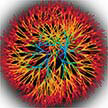 Nature has developed excellent biolubricating systems but onnce biolubrication for instance of synovial joints of osteoarthritis patients breaks down, relief has to come from partially or fully synthetic biolubricants - such as polymeric micro- or nanoparticle-based lubricants - that replace the depleted natural substances. Researchers have now demonstrated that phytoglycogen nanoparticles - single-molecule highly branched polysaccharides extracted from sweet corn kernels - are a highly effective biolubricating material.
Nature has developed excellent biolubricating systems but onnce biolubrication for instance of synovial joints of osteoarthritis patients breaks down, relief has to come from partially or fully synthetic biolubricants - such as polymeric micro- or nanoparticle-based lubricants - that replace the depleted natural substances. Researchers have now demonstrated that phytoglycogen nanoparticles - single-molecule highly branched polysaccharides extracted from sweet corn kernels - are a highly effective biolubricating material.
May 25th, 2021
 Nanotechnology is a promising technological advancement that can revolutionize agriculture and food production systems, but the technology must be thoroughly researched before being implemented. Nanobiosensors, nanofertilizers, and nanopesticides have the potential to significantly change the agricultural world. Nanotechnology research related to agriculture is still in its early stages, meaning these new products are not ready to be put on shelves. In particular, toxicity of nanoparticles is a serious concern because it can affect the plants, the soil, and the farmers.
Nanotechnology is a promising technological advancement that can revolutionize agriculture and food production systems, but the technology must be thoroughly researched before being implemented. Nanobiosensors, nanofertilizers, and nanopesticides have the potential to significantly change the agricultural world. Nanotechnology research related to agriculture is still in its early stages, meaning these new products are not ready to be put on shelves. In particular, toxicity of nanoparticles is a serious concern because it can affect the plants, the soil, and the farmers.
May 24th, 2021
 When experimental biomedical research results using only one sex are extrapolated to both sexes, unintended harmful consequences to the neglected sex can be the result. Nevertheless, it is still the case that only a small number of published articles report the sex of biosystems used in their study. Many researchers are still using only one sex of biosystems - e.g., cells, tissues, or animals - and apply the results to both males and females. And with the emergence of nanomedicine, the importance of sex in biomedical research has become even more obvious.
When experimental biomedical research results using only one sex are extrapolated to both sexes, unintended harmful consequences to the neglected sex can be the result. Nevertheless, it is still the case that only a small number of published articles report the sex of biosystems used in their study. Many researchers are still using only one sex of biosystems - e.g., cells, tissues, or animals - and apply the results to both males and females. And with the emergence of nanomedicine, the importance of sex in biomedical research has become even more obvious.
May 20th, 2021
 Inspired by the silk spinning of spiders, researchers have developed a facile strategy to artificially create natural, silk-like hierarchical fibers. They demonstrate the creation of biomimetic and highly bioactive materials by artificially manipulating the self-assembly of silk protein molecules. This work contributes to the understanding of the natural silk spinning process of spiders and provides a strategy for the design and development of advanced fibrous biomaterials for various applications.
Inspired by the silk spinning of spiders, researchers have developed a facile strategy to artificially create natural, silk-like hierarchical fibers. They demonstrate the creation of biomimetic and highly bioactive materials by artificially manipulating the self-assembly of silk protein molecules. This work contributes to the understanding of the natural silk spinning process of spiders and provides a strategy for the design and development of advanced fibrous biomaterials for various applications.
May 3rd, 2021
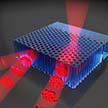 The propagation of light can be radically controlled with tailor-made nanostructures, called photonic crystals. The main feature of such crystals is a forbidden gap: waves with colors within a forbidden range travel only a limited distance - called Bragg length - before being reflected due to Bragg interference. Scientists have discovered a method to tunably steer light deep into photonic crystals, to depths well beyond the Bragg length. By spatially shaping the incident waves, the energy density of the light is enhanced at tunable distances deep inside the crystals.
The propagation of light can be radically controlled with tailor-made nanostructures, called photonic crystals. The main feature of such crystals is a forbidden gap: waves with colors within a forbidden range travel only a limited distance - called Bragg length - before being reflected due to Bragg interference. Scientists have discovered a method to tunably steer light deep into photonic crystals, to depths well beyond the Bragg length. By spatially shaping the incident waves, the energy density of the light is enhanced at tunable distances deep inside the crystals.
Apr 22nd, 2021
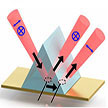 Researchers have significantly enhanced the performance of a surface plasmon resonance (SPR) biosensing platform by adding an atomically thin phase change material to the sensor. This plasmonic sensing device exhibits a detection limit of 1 femtomol for tumor necrosis factor (TNF alpha) biomarkers , which is more than three orders of magnitude compared to current state-of-art nanomaterial-enhanced plasmonic sensors. It also detects small biotin molecules with a sensitivity of 10 femtomols. This sub-attomole detection level is a significant improvement compared to other SPR designs.
Researchers have significantly enhanced the performance of a surface plasmon resonance (SPR) biosensing platform by adding an atomically thin phase change material to the sensor. This plasmonic sensing device exhibits a detection limit of 1 femtomol for tumor necrosis factor (TNF alpha) biomarkers , which is more than three orders of magnitude compared to current state-of-art nanomaterial-enhanced plasmonic sensors. It also detects small biotin molecules with a sensitivity of 10 femtomols. This sub-attomole detection level is a significant improvement compared to other SPR designs.
Apr 19th, 2021
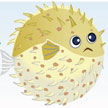 Although solar-driven water evaporation using sunlight is a promising sustainable strategy, the water production rate via solar technologies remains insufficient to meet practical demands. Addressing this issue, researchers have developed a solar absorber gel to purify water from contaminated sources using only natural sunlight. The hydrogel can force liquid water out of the gel via phase transition when the sun warms the material, so the water purification mechanism does not require water evaporation.
Although solar-driven water evaporation using sunlight is a promising sustainable strategy, the water production rate via solar technologies remains insufficient to meet practical demands. Addressing this issue, researchers have developed a solar absorber gel to purify water from contaminated sources using only natural sunlight. The hydrogel can force liquid water out of the gel via phase transition when the sun warms the material, so the water purification mechanism does not require water evaporation.
Apr 13th, 2021
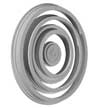 A new generation of lenses - metalenses - is starting to replace bulky curved lenses with simple, flat surfaces that use nanostructures to focus light. These flat surfaces - meatsurfaces - have enabled the design of diffraction-based flat devices to replicate the functionalities of conventional lenses with sub-wavelength or few-wavelength thicknesses. Researchers have now successfully designed and experimentally demonstrated an inverse-designed metalens to operate at a near-infrared wavelength.
A new generation of lenses - metalenses - is starting to replace bulky curved lenses with simple, flat surfaces that use nanostructures to focus light. These flat surfaces - meatsurfaces - have enabled the design of diffraction-based flat devices to replicate the functionalities of conventional lenses with sub-wavelength or few-wavelength thicknesses. Researchers have now successfully designed and experimentally demonstrated an inverse-designed metalens to operate at a near-infrared wavelength.
Apr 8th, 2021
 Nature has developed excellent biolubricating systems but onnce biolubrication for instance of synovial joints of osteoarthritis patients breaks down, relief has to come from partially or fully synthetic biolubricants - such as polymeric micro- or nanoparticle-based lubricants - that replace the depleted natural substances. Researchers have now demonstrated that phytoglycogen nanoparticles - single-molecule highly branched polysaccharides extracted from sweet corn kernels - are a highly effective biolubricating material.
Nature has developed excellent biolubricating systems but onnce biolubrication for instance of synovial joints of osteoarthritis patients breaks down, relief has to come from partially or fully synthetic biolubricants - such as polymeric micro- or nanoparticle-based lubricants - that replace the depleted natural substances. Researchers have now demonstrated that phytoglycogen nanoparticles - single-molecule highly branched polysaccharides extracted from sweet corn kernels - are a highly effective biolubricating material.
 Subscribe to our Nanotechnology Spotlight feed
Subscribe to our Nanotechnology Spotlight feed





